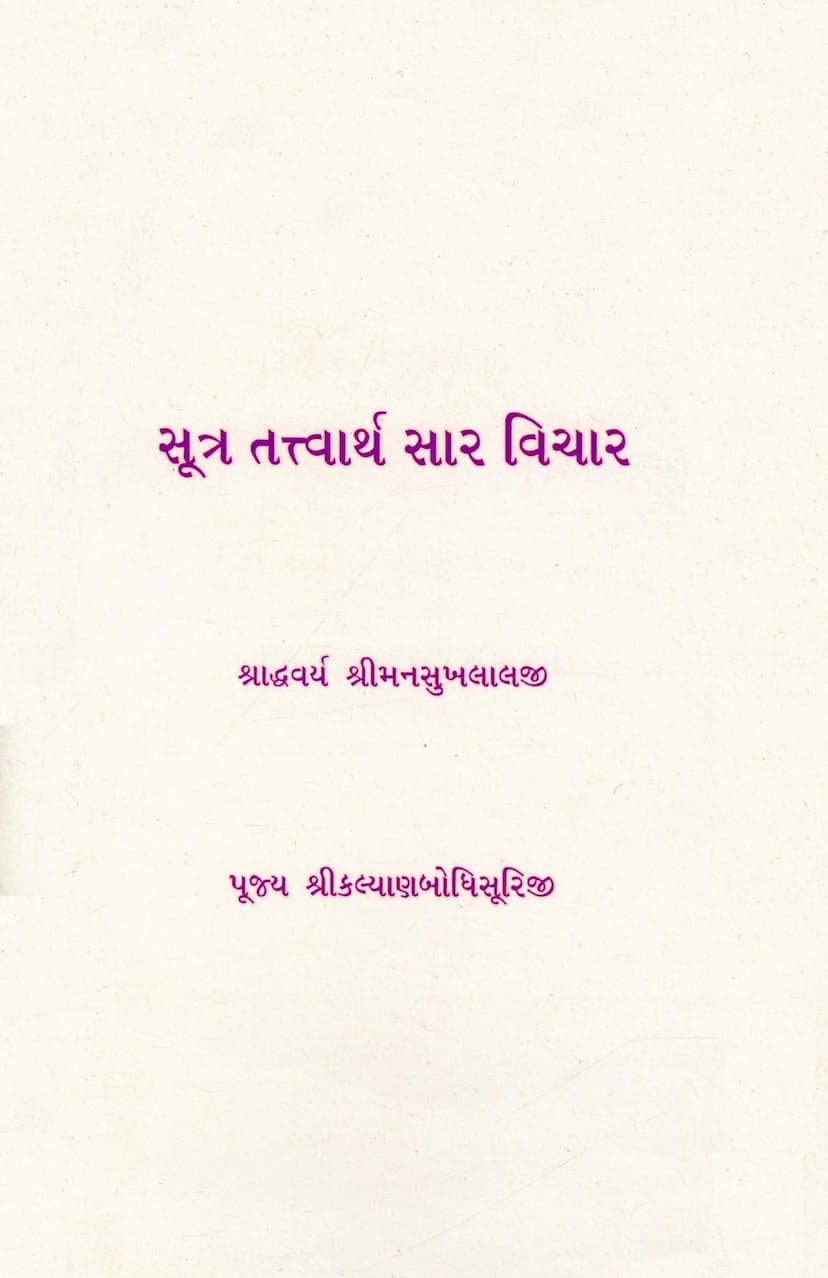Sutra Tattvartha Sar Vichar
Added to library: September 2, 2025

Summary
This Jain text, "Sutra Tattvartha Sar Vichar," compiled by Acharya Hemchandrasurishwarji M.sa.'s disciple, Acharya Shrimad Vijay Kalyanbodhisurishwarji, and originally composed by the learned lay follower Shrimansukhlaalji Harilaalji, serves as a comprehensive guide to core Jain principles. Published by Shri Jinshasan Aradhana Trust, it elaborates on the essential truths presented in Jain scriptures.
The book is structured into 29 chapters, each focusing on a specific aspect of Jain philosophy and practice. It begins with the fundamental concepts of Ratnatrayi (Three Jewels) – Right Faith, Right Knowledge, and Right Conduct – emphasizing their importance for liberation. It then delves into Syadvada (the doctrine of manifold predicaments), explaining how it helps in understanding the complexity of reality.
The text systematically covers:
- Knowledge (Jnana): Discussing the different types of knowledge according to Jainism.
- Dravya, Guna, Paryaya (Substance, Qualities, Modes): Explaining the ontological framework of Jainism.
- Bondage and Liberation: Detailing the causes of karmic bondage (Ashrava) and the paths to cessation and liberation (Samvara and Nirjara).
- Austerities and Conduct: Elaborating on various forms of penance and virtuous conduct, including the vows (Vratas) and their implications.
- Cosmology: Describing the structure of the universe, including the different realms of existence such as Naraka (hells), Jambudweepa (a continent of the universe), and Manushyaloka (human realm), along with the celestial beings (Devas).
- The Soul (Jiva): Discussing the various classifications and states of the soul.
- The Path to Liberation: Outlining the stages of spiritual progress (Gunasthanas) and the practices that lead to liberation.
- The Ultimate State: Describing the nature of the liberated soul (Siddha).
- The Ideal Beings: Characterizing the highest beings and great ascetics.
The text emphasizes practical application through the discussion of various vows and ethical principles. It also touches upon the nuances of karmic bondage and liberation, providing a detailed understanding of how actions influence one's spiritual journey. The book's style is described as simple and engaging, making profound Jain teachings accessible to a wider audience. It highlights the significant contribution of a lay follower in compiling such a detailed exposition of Jain doctrine, celebrating the expansive reach of Mahavir's teachings. The book also acknowledges the individuals and organizations involved in its publication, fostering a sense of community and shared effort in disseminating Jain knowledge.